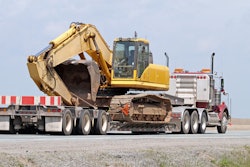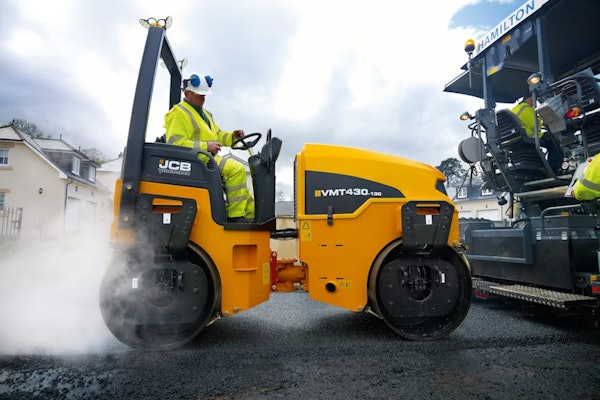Editor's Note: This story was updated September 4, 2024.
Komatsu remote-control amphibious D155W dozers that have been out of production for 23 years are still in operation in Japan, helping communities devastated by natural disasters and going where traditional dozers can’t.
Only five of the 36 models built between 1971 and 1993 remain, Komatsu says. They were restored by Asunaro Aoki Construction based in Japan for reconstruction after the Great East Japan Earthquake and tsunami of 2011. (Check out the video above of two of the dozers restoring a harbor in Iwate damaged by the tsunami.)
Asunaro Aoki performed the first construction project with the amphibious dozer in 1970 to dredge a river channel. The company has since completed more than 1,200 construction projects in Japan with the amphibious dozers and has teamed up with Komatsu to develop electric underwater robots that can operate as deep as 160 feet – much deeper than the 23-foot max depth of the D155W.
Together, they will present “underwater construction of the future” at the Expo 2025 Osaka, Kansai, Japan. Komatsu will roll out its concept electric underwater construction robot that it produced in July 2023 and has been testing in rivers and fishing ports in Japan.
 Komatsu's amphibious D155W dozer, left, and its concept underwater construction robot that has been undergoing testing since July 2023.Komatsu
Komatsu's amphibious D155W dozer, left, and its concept underwater construction robot that has been undergoing testing since July 2023.Komatsu
Amphibious dozer
The engines of the five Komatsu amphibious dozers owned by Asunaro Aoki are contained in a watertight compartment. A snorkel-like high stack pulls in air and expels engine exhaust.
They are designed as an excavation machine in shallow waters or along dangerous shorelines. Along with disaster repair work, they have performed such projects as river channel dredging, offshore breakwaters and manmade reefs.
After the earthquake and tsunami in 2011, Asunaro Aoki fully restored each of its five D155Ws for projects to reconstruct damaged bridges, harbors and ports. One of the big advantages of the dozers is they prevent sand from being sucked out of gaps between stones due to wave impact. As the amphibious dozers push and simultaneously compact the sand over the damaged areas, the sand is built up over the gaps.
They also prevent the need to build temporary roads or jetties for land-based excavation equipment. Because they are remote control, operators remain safe.
The future of underwater construction
Komatsu and Asunaro Aoki are continuing the legacy of the D155W by developing future underwater construction equipment.
The robots they are developing will operate by automatic control and information and communications technology. The companies say the construction plan for such underwater projects would be guided by analysis of artificial intelligence, which combines “3D survey, design and construction data with big data, such as weather data and construction history.”
Komatsu and Asunaro Aoki note that in recent years, there has been a growing need for underwater construction work following natural disasters.
“These are becoming more severe and frequent due to climate change as well as the impending massive earthquakes,” the companies say.
The companies also note the Japanese construction industry’s shortage of skilled workers due to the declining birthrate and aging population. “The two companies are confident that the underwater construction of the future, with its reduced workforce, greater efficiency and improved safety, will revolutionize conventional construction work, enabling anyone to play an active role and realize faster construction work.”
The companies' vision for the future will be on display at the 2025 Expo.
“The exhibit will feature three short videos on immersive large screens, introducing the evolution of amphibious bulldozers into advanced underwater construction robots,” Komatsu says. “Visitors will also experience a highly realistic and exciting presentation, including a detailed large-scale model of the concept machine and a 3D display that simulates the underwater environment.”














